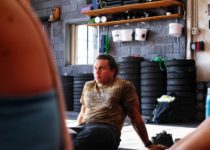
I’ve written before about sub-optimal learning environments. When it comes to learning, you don’t need to get too far down the rabbit hole to realize that not all training and practice is created equal. It’s possible to mostly waste an hour of learning and it’s possible to exponentially improve the learning returns in the same sixty minute period.
Once we accept that there are better ways to learn than others, the next place to turn your attention to is maximizing your time. Given that there is an opportunity for maximum learning potential and we often fall below this potential, we can call this gap between our learning potential and our actual learning “slack” in the learning system.
The goal now is to remove slack from the system. The best way to discuss this with any brevity is to look at feedback loops. Shorten the time it takes to get information from which you can alter your course for the better and you’ve successfully removed slack from the current system. Increase the time between an effort and a learning adjustment and you increase the slack in the system. For example, learning to protect my neck between fights within in a jiu jitsu class has less slack in the learning system than learning to make the same adjustment between classes or weeks of classes.
Reflect on the area of your life that you’d like to improve your learning capacity most. Once you know the context that you’d like to maximize your learning in I encourage you to look at the intervals in which you can use feedback for reflection. You goal is to shorten that interval.
In a past life, I best executed in a baseball context. The clear difference in learning intervals defined how far your progressed in the sport. For example, little league players can make adjustments season to season. “I struck out a lot this season. Next season, I won’t swing at as many pitches in the dirt.” This interval is far too long to keep up with the competition at the varsity level in high school, however. If you want to play NCAA baseball at the highest level, you’d be hard pressed to make adjustments from game to game. Players who can make an adjustment to their craft from at-bat to at-bat, for example, would be at a distinct learning advantage with less slack in their system. Professional baseball players make adjustments from pitch to pitch. It’s no coincidence that this is the shortest feedback loop in the context of the game.
Logan Gelbrich
@functionalcoach
3/26/19 WOD
Complete 4 rounds for quality of:
2 Rope Climbs
6 Narrow Grip Bench Presses
8 DB Roll Back Presses
Complete 4 rounds for time:
500m Row
-Rest as Needed-

